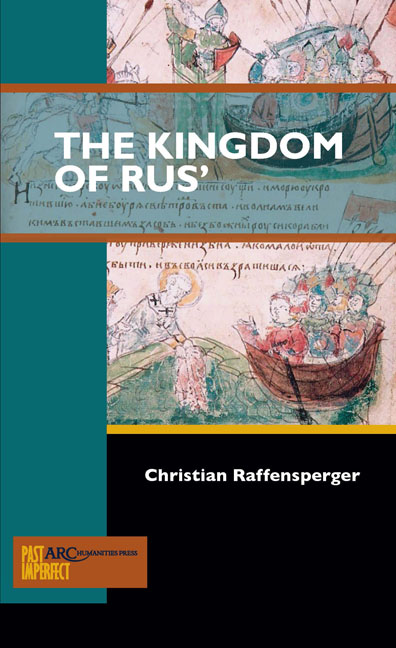Book contents
- Frontmatter
- Dedication
- Contents
- Acknowledgements
- Timeline of Events
- Introduction: The Problem with Names
- Chapter 1 The Place of Rus’ in Europe
- Chapter 2 The Historiography of the Translation of Kniaz’
- Chapter 3 Titulature and Medieval Rulers
- Chapter 4 What Was a Kniaz’?
- Chapter 5 Medieval Titulature and Rus’
- Chapter 6 Titles for Other Medieval Rulers in Rusian Sources
- Conclusion: Consequences and Resolution
- Further Reading
Chapter 1 - The Place of Rus’ in Europe
Published online by Cambridge University Press: 14 January 2021
- Frontmatter
- Dedication
- Contents
- Acknowledgements
- Timeline of Events
- Introduction: The Problem with Names
- Chapter 1 The Place of Rus’ in Europe
- Chapter 2 The Historiography of the Translation of Kniaz’
- Chapter 3 Titulature and Medieval Rulers
- Chapter 4 What Was a Kniaz’?
- Chapter 5 Medieval Titulature and Rus’
- Chapter 6 Titles for Other Medieval Rulers in Rusian Sources
- Conclusion: Consequences and Resolution
- Further Reading
Summary
Europe is a place. It is a continent, though with only imprecise divisions from Asia, and one that schoolchildren are required to learn about as part of elementary geography lessons. Europe is also an idea. This can be seen most clearly in the expansion, and contraction, of the European Union (EU). Is Ukraine “European” enough for membership in the EU, as was discussed in the early 2010s? Or is Britain becoming too European and thus needing to leave the EU, as the Brexit (British Exit) campaign suggested in the mid-2010s? For our hypothetical schoolchild learning their geography, both Ukraine and Britain are included within the boundary of Europe. However, in many minds, the question remains: are they part of the idea of Europe?
Traditional Medieval Europe
This same quandary pertains to medieval Europe. In fact, because it is in the past, it perhaps pertains even more, as we can only impose our ideas upon it and it cannot argue back. We can make the same distinction for medieval Europe regarding geography versus idea, but even there, we run into problems: the geography of Europe (or at least the conceptualization of territory in the medieval mind) is still being defined in the medieval period and so we are forced further into the realm of ideas. The idea of medieval Europe, the one that is on the minds of non-specialists as well as most specialists, is one of castles, knights, princesses, dragons (yes, mostly non-specialists, but not all …). It is best represented by England, France, and the papacy, and does not really include very much else. The Vikings were outsiders attacking England, France, and the papacy. The crusades were England, France, and the papacy acting upon the Islamic world. The main events were the rise of Charlemagne (France is great); the Normans (from France) taking over England; King John signing the Magna Carta; the wars of Philip Augustus of France and King John for control over continental (French) territory; the wars of the various Edwards of England with Scotland (and France); the Hundred Years’ War between England and France; and maybe the Great Schism, where there were two (at least) popes (who were usually backed by England and France). This may not be the exact curriculum offered, but it would enable most non-specialists to get by with a passing grade in medieval European history.
- Type
- Chapter
- Information
- The Kingdom of Rus’ , pp. 9 - 24Publisher: Amsterdam University PressPrint publication year: 2017



